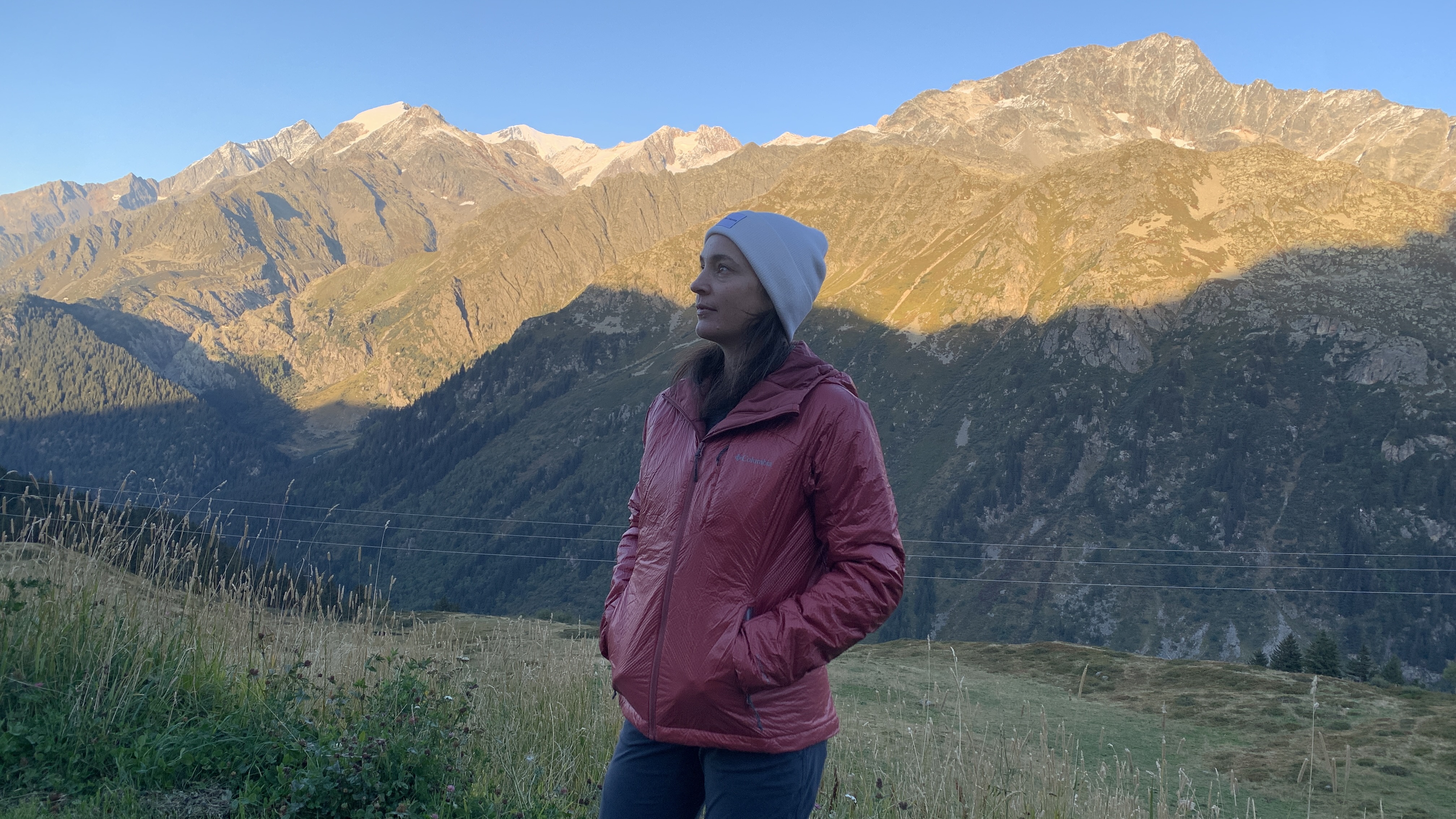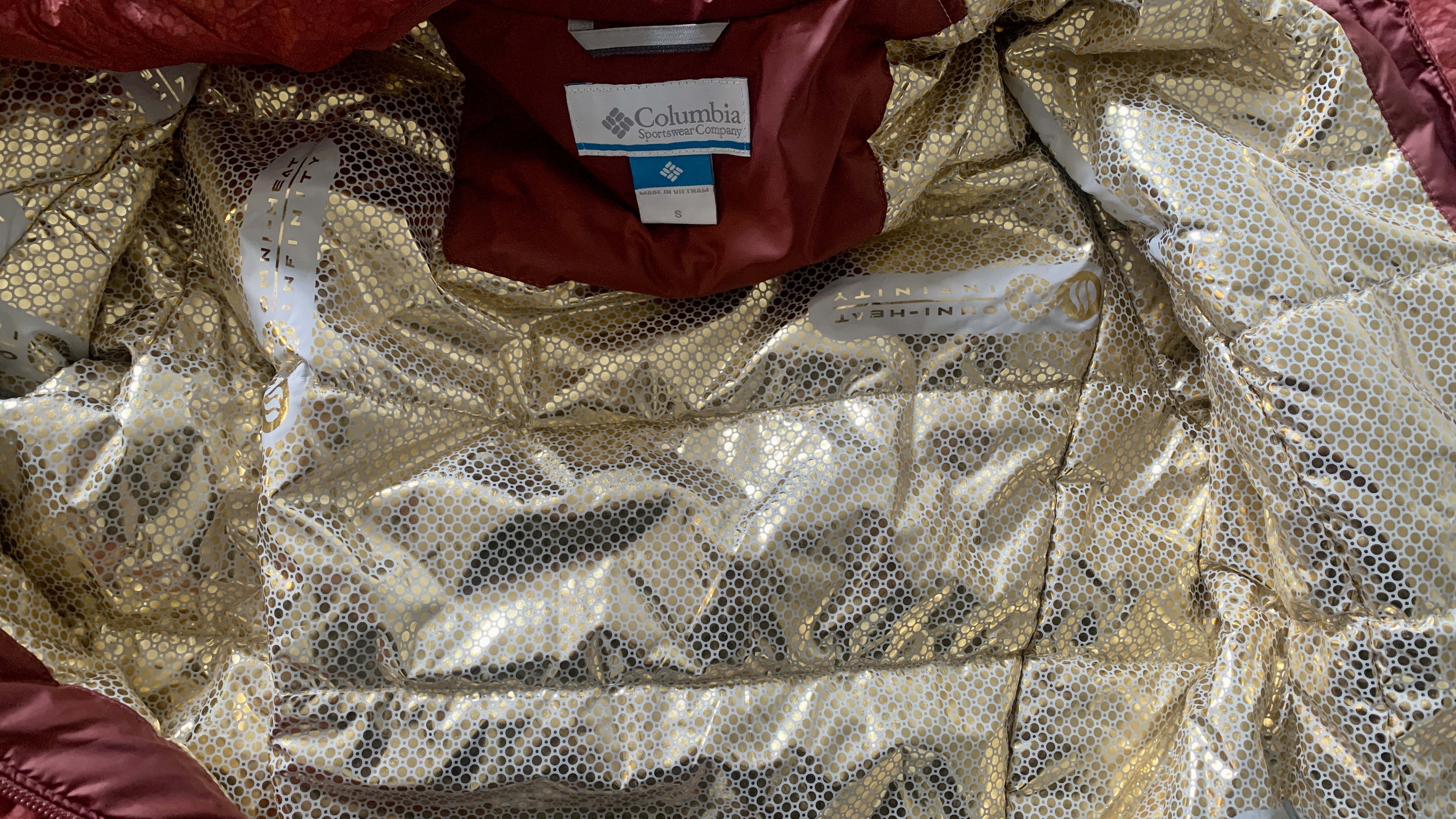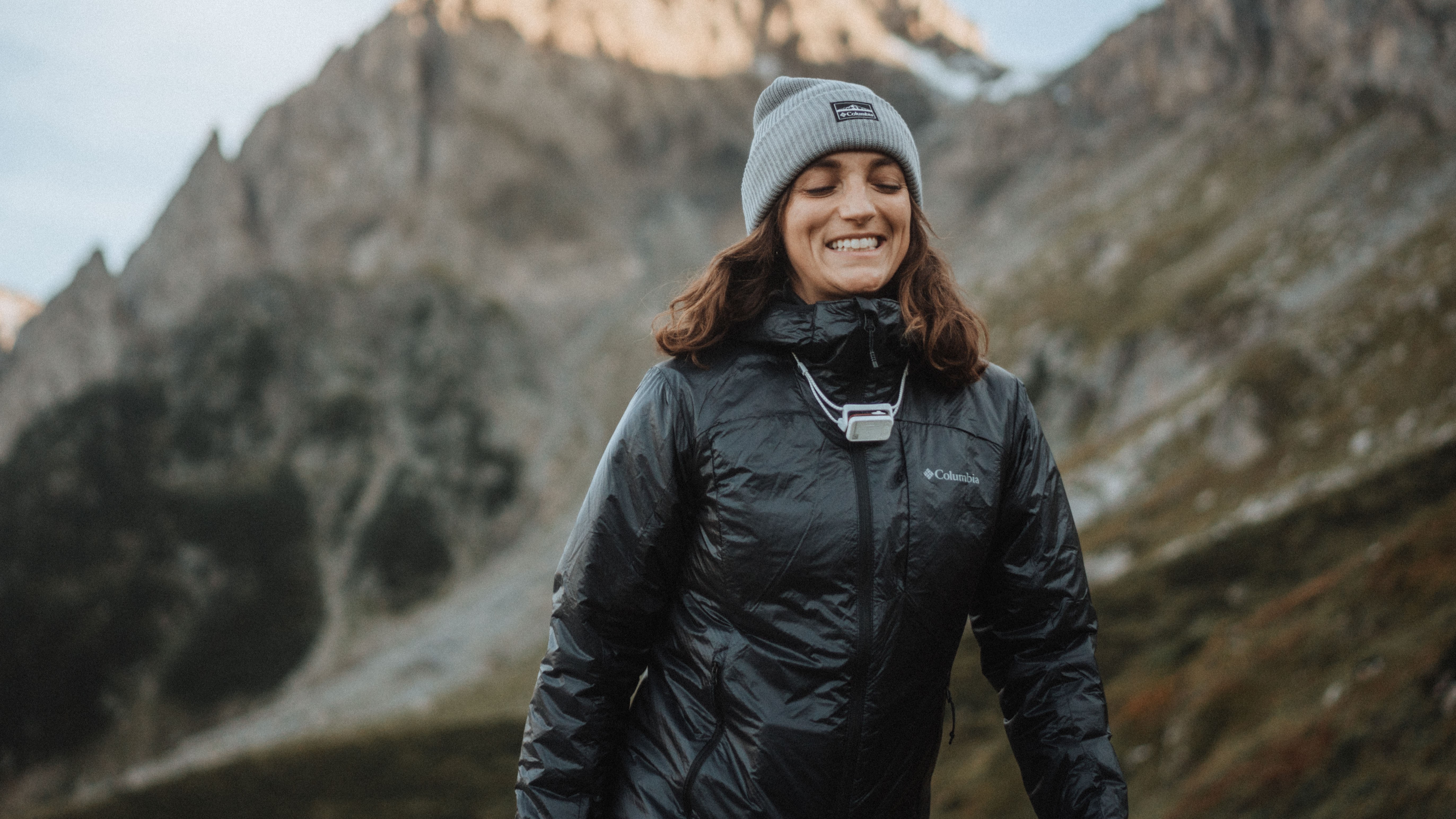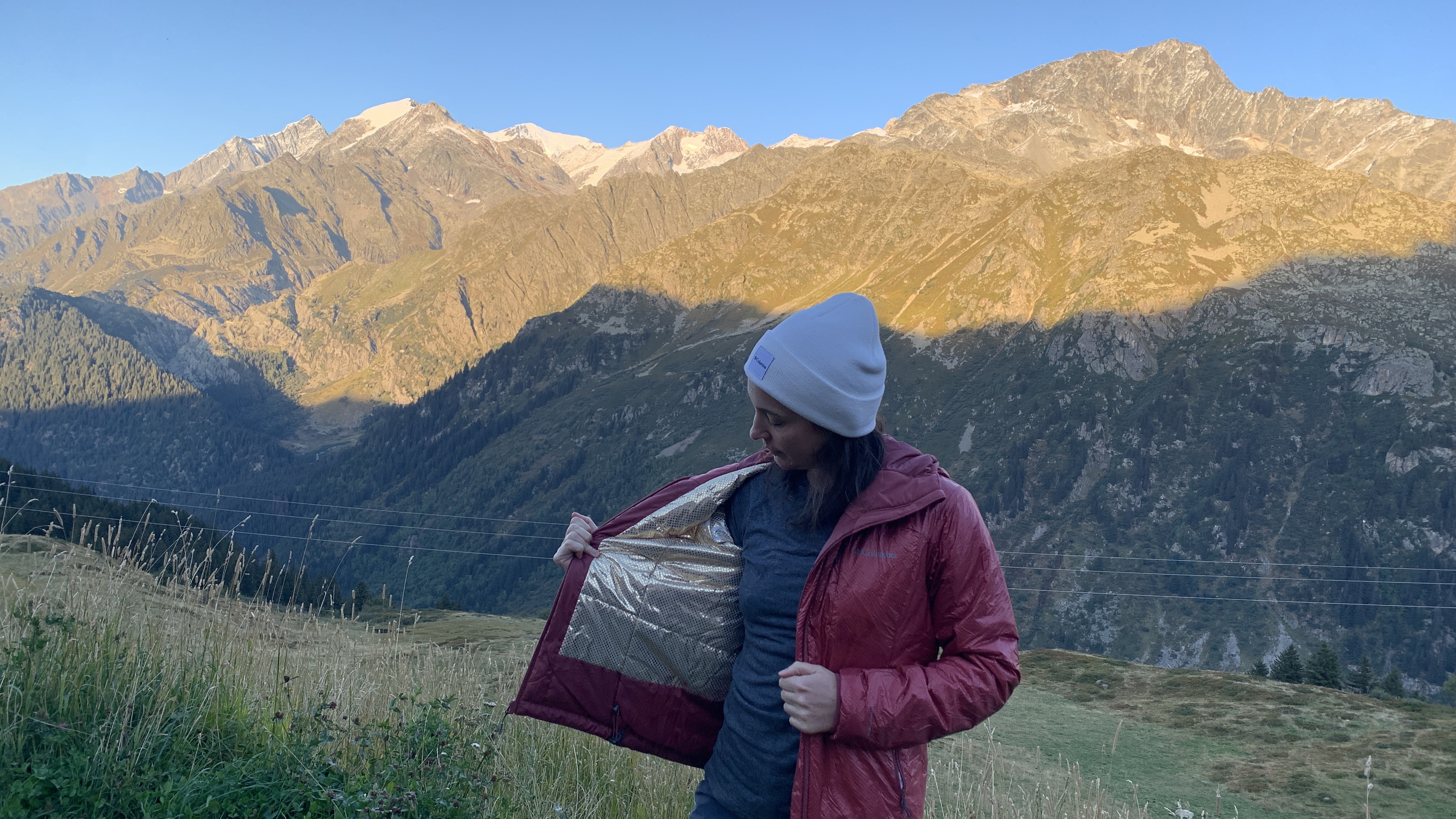Advnture Verdict
Columbia’s genius Omni Heat technology traps your body heat and holds the wind at bay, making this puffer jacket both stylish for urban winter walks and ultra high performing for rugged and frosty adventures
Pros
- +
Great weight-to-warmth ratio
- +
Lightweight and packable
- +
Windproof and water-repellent
- +
Well priced
- +
Zippered chest and hand pockets
- +
Drawcord adjustable hem and drop tail
- +
Uses recycled materials
- +
Stylish
Cons
- -
Hood not adjustable
You can trust Advnture
Columbia Arch Rock Double Wall Elite Insulated Jacket: first impressions
With this lightweight synthetic puffer jacket, Columbia has aimed for the stars and just about reached them. In addition to the synthetic insulation, the heritage outdoors company has taken things a step further by incorporating NASA technology into both the lining and face material of this jacket to maximize the thermal returns. Their Omni Heat technology, which is based on the same technology used in emergency blankets, isn’t new, but this jacket features an upgraded version.
Basically, the inner of the jacket displays a series of small gold dots which reflect your body’s heat back to you (and looks pretty blingy too!). Furthermore, an additional layer of dots has been applied to the face material, facing in towards your body, and the result is a supremely toasty experience even in frigid conditions.
• List price: $200 / £200
• Gender specification: Men’s and women’s sizing available
• Sizes: Men’s: Small–XXL / Women’s: XS–XL
• Weight: 400g / 14 oz (women’s small)
• Materials: Nylon, Polyester, Microtemp XF II
• Colors: Warp red / Stone green / Black / Beetroot
• Best use: Hiking, camping
To enhance the protection afforded by the space blanket tech, this jacket is windproof which goes a long way towards keeping the intrepid adventurer warm in an arctic blast, and even a little water repellent should you encounter a light shower.
Elasticated hood and cuffs plus the drawcord hem and drop tail help you seal out any sneaky drafts. This jacket is cozy and stylish, with enough zipped pockets to handle gear you want within reach, and doesn’t cost an arm and a leg. The only thing we can find wrong with it is that the hood isn’t adjustable, so if you want to cinch it really tight in a howling gale you can’t, but other than that we’re looking forward to lots more frozen adventures in this glam-looking winter warmer.
Columbia Arch Rock Double Wall Elite Insulated Jacket: in the field

As an outdoors journalist, it’s not unusual for me to be out and about testing a new insulated jacket against the elements, but testing one that comes with space-age insulation was new to me, and very welcome as the days get shorter.
I went on a press trip with Columbia early this fall to test this jacket, where we went hut hiking in the French Alps. Though the days were unseasonably warm, the nights were predictably nippy and I got to test this jacket on our night hike as well as when doing some stargazing from our mountain cabin. Since I’ve returned to Scotland, we’re having an unseasonably cold autumn so I've had plenty of opportunities to test it up our mountains.
Here’s how it performed:
Size and fit
I am typically a size small and that’s what I tested. Though I often find Columbia clothes run a little large, this jacket fits true to size, with enough room to wear it over a fleece and a base layer. The slight drop tail keeps my bum warm, the sleeves come down to my knuckles for a little warmth without being annoyingly long and the hood is snug enough to be cozy but has room for a helmet underneath.

Insulation and breathability
Obviously, Columbia is going for ultra warm by incorporating Omni Heat technology here. It’s already been scientifically proven that NASA’s reflective technology works, and that’s why it’s used in emergency blankets. It’s tough to prove their claim that the gold dots (rather than the original silver dots) are even warmer, but what I can say form wearing it is that this jacket is really, really toasty.
As I mentioned, I wore it on a night hike and though the weather was great, up at 7,000 feet it was cold once the sun set, plus I’d gotten a little sweaty hiking up. I threw this on over a wool base layer and I couldn’t believe how instantly comfortable I was in it.
It’s quite powerfully insulated, which is helped a great deal by the windproofing (and means you don’t have to layer a shell over it if it isn’t raining) so I was a bit worried about breathability – after all, you wouldn’t want to hike in a space blanket. However, the pattern layout of the dots seems to be enough to let moisture vapor escape and between taking breaks and unzipping, I’ve been able to climb some steep slopes in this without getting clammy.
Weight and packability
Synthetic puffer jackets often fall behind traditional down jackets in this department, but this jacket is actually more than 50g lighter than my Rab Infinity Microlight Down Jacket as well as my North Face Thermoball 50/50, which is synthetic. It’s insanely light and just as packable as my down jacket – I guess the Omni Heat reduces the need for bulky insulation, which makes this a really strong contender for hiking, even though it looks great around town too.

Comfort and storage
There’s nothing really to stand between you and comfort in this jacket, except for the fact that the hood isn’t adjustable. It stays up in the wind, but in a Scottish wind it does blow back a bit and in a howling gale I’d probably want to be able to cinch it, but with a beanie hat on underneath I’m happy enough.
It has two hand warming pockets that I can still access with my backpack hip belt fastened, plus a Napoleon pocket for my phone, and all are zipped to keep my gloves and gear secured.
Durability and value
In general, puffer jackets are more fragile than hardshells, but the face material this one is definitely made from tougher stuff than some and of course without down, there’s no feather leakage.
I think the price is really reasonable too, for what you get. It’s not the cheapest jacket compared to others we’ve tested, but it falls right in the middle of that price range and definitely offers superior warmth. It’s stylish enough to want to wear for daily use too, but not so much that it’s likely to look dated in a couple of years.

Columbia Arch Rock Double Wall Elite Insulated Jacket: the bottom line
This jacket features an impressive design and delivers superior warmth for a reasonable price. Columbia is definitely erring towards the younger, more fashion-forward generation of hikers these days, and sometimes that means they miss the mark when it comes to performance, but they’ve managed to tow that line nearly perfectly with this jacket, which is compressible enough to go in your daypack for any hike, and technical enough to keep you warm and safe in frigid temperatures.
Julia Clarke is a staff writer for Advnture.com and the author of the book Restorative Yoga for Beginners. She loves to explore mountains on foot, bike, skis and belay and then recover on the the yoga mat. Julia graduated with a degree in journalism in 2004 and spent eight years working as a radio presenter in Kansas City, Vermont, Boston and New York City before discovering the joys of the Rocky Mountains. She then detoured west to Colorado and enjoyed 11 years teaching yoga in Vail before returning to her hometown of Glasgow, Scotland in 2020 to focus on family and writing.


